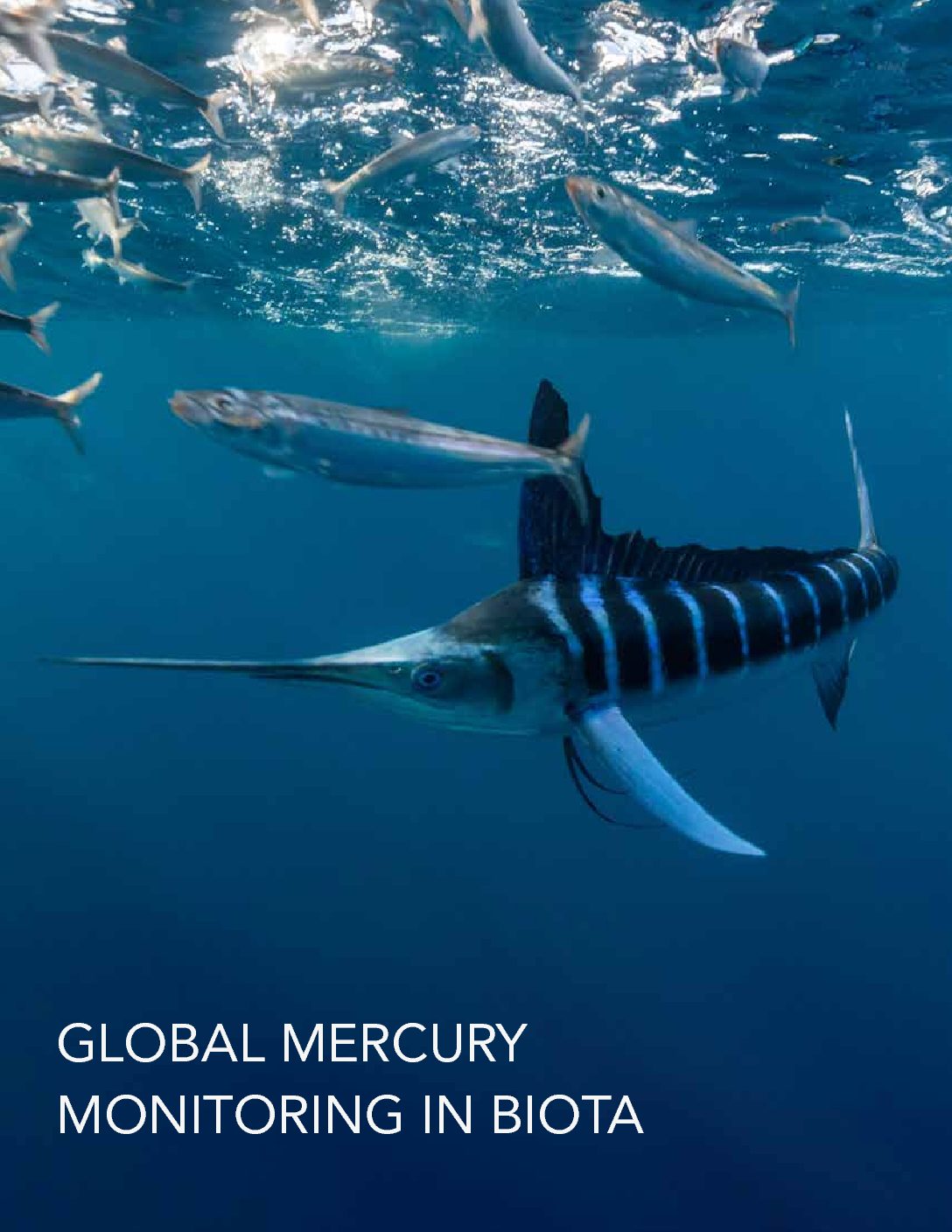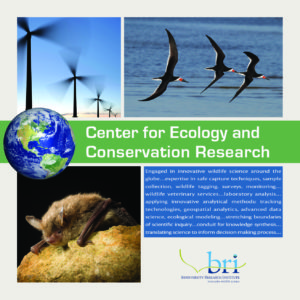
16th International Conference on Mercury as a Global Pollutant (ICMGP 2024)
21 – 26 July 2024, Cape Town, South Africa
Featuring workshops about mercury as a critical global issue, including current research, data science, best practices and methods, and insight on new technology and equipment.
BRI at ICMGP

BRI’s Center for Mercury Studies—Gold Sponsor!
BRI Events at ICMGP
- Session 20: Special Session: Mercury and Biodiversity – Wednesday 24 July at 8:30 – 10:30. Co-chairs: David Evers & Paco Bustamante
- Timothy Tear, Biodiversity Research Institute – Developing a Global Mercury Threat Assessment Based on Mapping Ecosystem Sensitivity to Methylation and Risk of Mercury Contamination. (8:45)
- David Evers, Biodiversity Research Institute – Using the Global Biotic Mercury Synthesis to better understand adverse impacts of methylmercury availability on biodiversity. (10:00)
- Poster presentations – Between Monday 22 July at 10:00 and Tuesday 23 July at 14:00
- Supporting the phase out of mercury-added skin lightening products across the African, Asian, and Caribbean region
- The intersection of mercury threat and global biodiversity conservation prioritization areas
- Workshop: Biomonitoring to achieve goals in the Minamata Convention – Sunday 21 July at 13:00
- OESG plenary session: Effectiveness Evaluation of the Minamata Convention – Monday July 22 at 14:00 – 5:30
- BRI’s Mark Burton is presenting
- Plenary #5 Mercury and its potential impacts on biological diversity – Thursday 25 July at 11:00 – 12:30
- Malgorzata Stylo, Allison Aldous, Claudia Vega, Luis E. Fernandez, & Monika Stankiewicz.
Moderator: David Evers
- Malgorzata Stylo, Allison Aldous, Claudia Vega, Luis E. Fernandez, & Monika Stankiewicz.
More details will be posted when they become available. Find additional information about the Conference here.
BRI’s Contribution to the Minamata Convention
Find COP5 meeting documents, online event recordings, and information on participants here.
As experts in the field of mercury science, BRI researchers were invited by U.S. government officials to participate as a nongovernmental organization (NGO) during the negotiating process of the Convention. The meetings of the International Negotiating Committee (INC) that preceded and have continued since the adoption of the Convention include delegates from more than 140 countries and numerous NGOs interested in reducing mercury pollution. BRI has participated in five of the first seven INC meetings, and each subsequent Conference of Parties.
BRI serves as co-lead of the UN Environment’s Mercury Air Transport and Fate Research partnership area. As a co-lead, BRI assists developments for a globally coordinated mercury monitoring and observation system. In addition, BRI aids three UN agencies in implementation of Minamata Convention Initial Assessment (MIA) activities in many countries, as (1) an Executing Agency with UNIDO, (2) an International Technical Expert with UNDP, and (3) an International Technical Expert with UN Environment. These MIA activities are designed to assist countries with developing strategies for ratifying and ultimately implementing the Convention.
Global Mercury Impact Synthesis: Impacts of Climate on Mercury Fate and Processes in the Southern Hemisphere
 To support implementation of the Minamata Convention on Mercury and COP-5, the mercury science community produced synthesis papers summarizing current knowledge that is relevant to articles of the Convention. In association with the 15th International Conference on Mercury as a Global Pollutant (ICMGP), five papers by leading mercury scientists and policymakers were published in a special section in the journal Ambio in 2023. These synthesis papers summarize the current understanding of mercury and ASGM, impacts of mercury on human health, effects of climate change on mercury cycling, and the natural and anthropogenic mercury sources and processes in the Southern Hemisphere. Sharing and summarizing data enhances communication among a diverse group of researchers, managers, and policymakers, which allows for scientific findings to help better inform policy decisions. Read the special issue here.
To support implementation of the Minamata Convention on Mercury and COP-5, the mercury science community produced synthesis papers summarizing current knowledge that is relevant to articles of the Convention. In association with the 15th International Conference on Mercury as a Global Pollutant (ICMGP), five papers by leading mercury scientists and policymakers were published in a special section in the journal Ambio in 2023. These synthesis papers summarize the current understanding of mercury and ASGM, impacts of mercury on human health, effects of climate change on mercury cycling, and the natural and anthropogenic mercury sources and processes in the Southern Hemisphere. Sharing and summarizing data enhances communication among a diverse group of researchers, managers, and policymakers, which allows for scientific findings to help better inform policy decisions. Read the special issue here.
BRI Science Communication

Global Mercury Monitoring in Biota (2019)
Technical Information Report on Mercury Monitoring in Biota (2019)
Monitoring mercury in biota (plants and animals) provides a pathway for understanding spatial gradients, temporal trends, and environmental magnitude of concern that cannot be ascertained in air, water, or sediment. Emphasizing upper trophic level biota for monitoring ultimately provides a confident ability to asess whether the global input of anthropogenic mercury into the environment is safe or harmful to fish, wildlife and humans. Learn more in our 8-page communications booklet or download our full technical report above.
In addition, download the UN Environment Programme’s summary brochure here.
Global Mercury Inventory Synthesis (2019)
Global Mercury Inventory Synthesis – Technical Report (2019)
This publication highlights the results of a pilot study that Biodiversity Research Institute, in collaboration with UN Environment, developed to examine and summarize the national mercury inventories of 43 countries that have completed the Minamata Initial Assessment process. This pilot study quantifies the relative contributions of sectors (ten primary source categories) to mercury emissions and releases, within a set of countries representing varied global regions and socio-economic backgrounds. Learn more in our 4-page communications booklet or download our full technical report above.
Mercury in the Global Environment presents data on mercury concentrations in marine and freshwater biota extracted from the GBMS database, as well as mercury data relative to global fisheries capture data from the Food and Agriculture Organization (FAO). Mercury concentrations from various taxa are presented and compared geographically. Together, these data help inform decision makers of species in which and locations where mercury presents a risk to human health and the environment. This report aids parties of the Minamata Convention on Mercury during their ratification and implementation processes.
Mercury in the Global Environment: Marine Mammals (2017)
Marine mammals migrate across the globe, either forgaging on the smallest of animals (krill) or prey on the largest, but all depending on uncontaminated food sources. Over the past century, mercury released through industrial processes has been entering and accumulating in the world’s oceans, putting marine mammals at risk. To help illustrate the impacts of methylmercury biomagnification (increased toxicity as toxins moves up the food web) and bioaccumulation on marine mammals, we have identified five particularly affected groups: toothed whales, baleen whales, pinnipeds (seals and walruses), people (in particular, aboriginal subsistence communities), and the polar bear.
Mercury in the Global Environment: Tuna (2018)
Tuna are regularly listed on fish consumption advisories. Yet, tuna are consistently among the top five commodities in the global fish market. Skipjack, albacore, and yellowfin are most commonly processed for canned products, while bluefin are valued for direct consumption. This publication summarizes GBMS and FAO data from nine tuna species, and examines trends by ocean basin through the lenses of human and environmental health.
The Minamata Convention aims to reduce mercury use in products and dental amalgam. This booklet focuses on mercury-added products, as outlined in Article 4, which prohibits the manufacture, import, and export of specific mercury-added products by 2020. In addition, it discusses Article 11, which addresses mercury wastes.
Fish and wildlife provide important information on the risks and impacts of mercury pollution on environmental and human health. Biomonitoring is the process of assessing the health of organisms and ecosystems through changes in mercury risk and exposure over time. This publication describes biomonitoring efforts outlined in Article 19 of the Minamata Convention on Mercury, which lists fish, sea turtles, birds, and marine mammals as organisms to be monitored.
Mercury Tracking Fliers

Learn how you can participate in global efforts to track mercury in cosmetics, humans, and seafood in your country. Each brochure outlines the sampling process and highlights how participation will help countries meet requirements of the Minamata Convention on Mercury.
Phasing Out Mercury-added Products: Skin Lightening Products and Other Cosmetics
Local, Regional and Global Biomonitoring: People
Photo Credits: Header photo ©Shutterstock, nattrass



